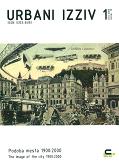Transformations of structure and programme in three Slovene coastal cities
Transformations of structure and programme in three Slovene coastal cities
Author(s): Boštjan BugaričSubject(s): Social Sciences
Published by: Urbanistični inštitut Republike Slovenije
Keywords: industrialization; functionalism; Slovenian coast; privatization
Summary/Abstract: The structural transformations of Slovenian coastal cities are a form of content development strategies that have been dictated by different city actors throughout the history. Because of the process of industrialisation, the coastal region adopted a new structure in the form of industrial structures. Today, these structures are left without appropriate contents and present degraded areas of the city that are subject to the interest of the capital. The post-war period of functionalism attempted to introduce in the area the conditions for social reformation of the social structure, architects were designing for the needs of the working class, which inhabited the newly built residence areas. In the sixties of the 20th century, a new typology of residential tall buildings, which began to rise vertically, emerged from horizontal industrial structures. At the level of organisation of space, the period after transition brought in the coastal space a widespread state of chaos, as spatial interventions were made on the basis of the interest of capital and to a lesser degree on the basis of expert guidelines. Urbanism as a discipline is not flexible enough to regulate the swift transformations of the forms of capital. As a result, the capital is spreading unrestrictedly across all limits of the city.
Journal: Urbani izziv
- Issue Year: 19/2008
- Issue No: 1
- Page Range: 162-168
- Page Count: 7
- Language: English

